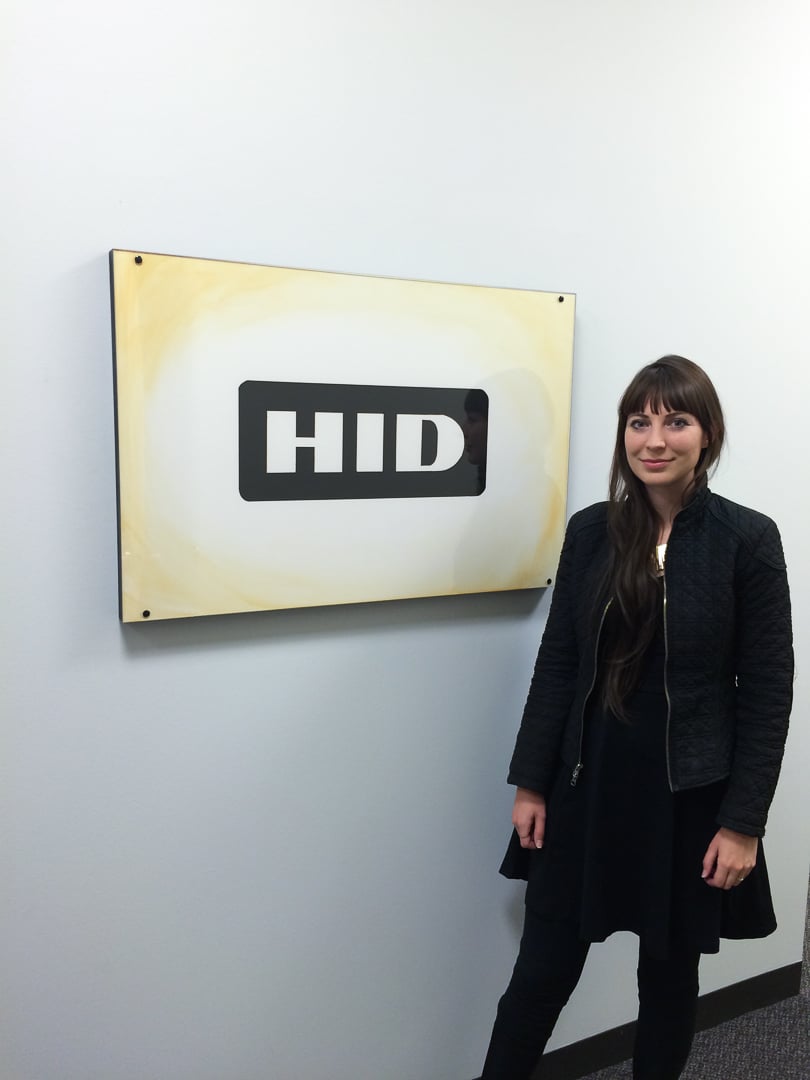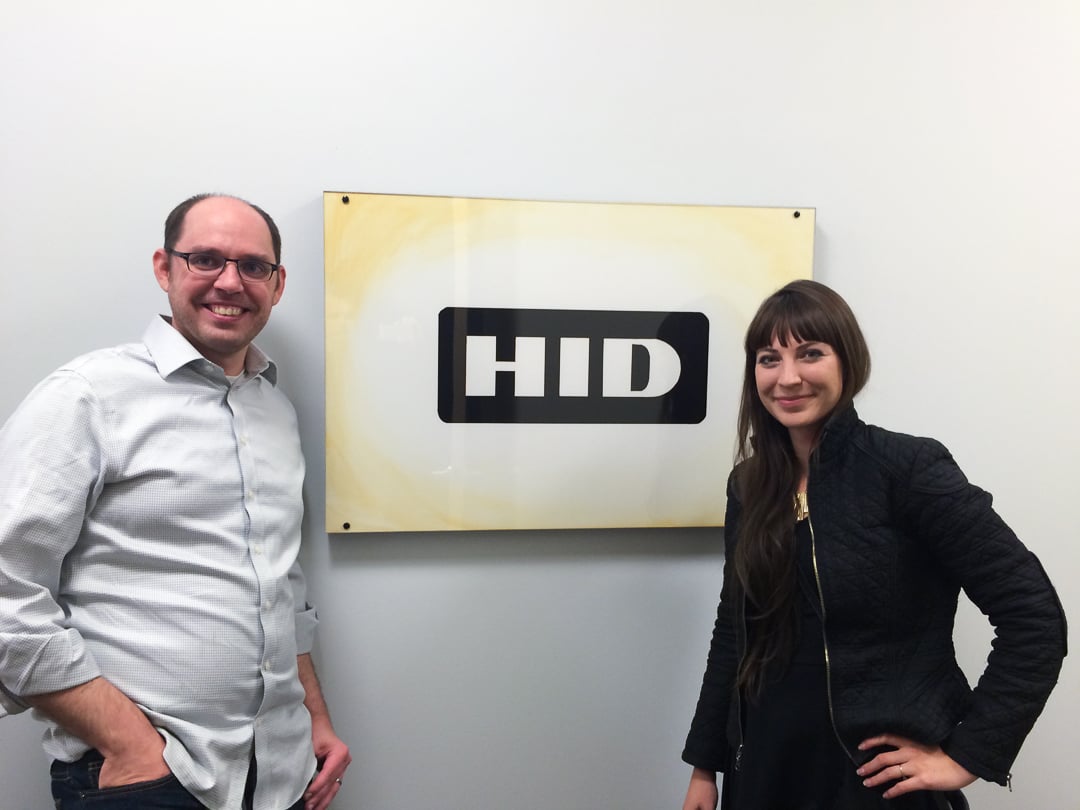Art Commission for HID Global
If you have a key card, to school, work, or a government office, there is a running chance that there are three letters embossed somewhere on it that spell HID. And even if there are other letters embossed on your card, there's a pretty good chance that HID is responsible for the technology inside of that card. They create hardware and software for the security and identity industry now, and are also creating the future of security.
At the end of November, I finished a nine-painting commission for HID. The research involved meeting with a lead engineer from the HID Global R&D site and learning about both cryptography and the hardware which was created at the site where the paintings were initially installed (the first installation is shown in these pictures- the paintings are now on display in the HID global headquarters in Austin, TX).
I had pitched two different concepts, one, called the Mythology of Cryptography was to be a triptych in which the concepts in cryptography were personified as characters. The concept paintings revealed by analogy something of the processes involved in cryptography. These same processes are operative behind the scenes in the security products (like keycards) which increasingly dominate our day-to-day lives and grant us access to a growing variety of things-- the simplest example being buildings.
As an access identity company, HID is actively involved in creating both our present identity products as well as shaping the future of access. The second concept, which was more hardware-based, was chosen by the R&D site leads, and these paintings commemorated their years of work on various circuitboards which are currently in operation around the world.
There were two particularly interesting components to this work: first, it involved research into cryptography, security, and circuitboards. The second was that the project had a lot in common with aims and concerns of public art.
Earlier this year, I attended a Denver symposium on public art, where several of the presenters touched on its history and the current ideological climate surrounding its production. The idea of listening of the population that will have to endure the presence of the finished work was one of the dominant themes.
Since this commission was initially going to be installed in an R&D site in Westminster, CO, one of my primary goals was to create something that would connect with the engineers who work at the site. Tom Stephens, the Engineering Manager and visionary for the creation of this commission opportunity, was the liaison between myself and the other decision-makers at the company.
The concept we went with went through several iterations, and in the end, we went with something artistic, yet concrete— abstracted, yet accurate depictions of products that HID makes. I was especially intrigued by the more visually complex pieces, which ranged from the inside of the card readers, to specific circuit boards, to the charts that describe the interactions of radio waves. The aim was to include a mixture between the insides and the outsides of the elements across the series so that there would be visual variety in the colors and shapes.
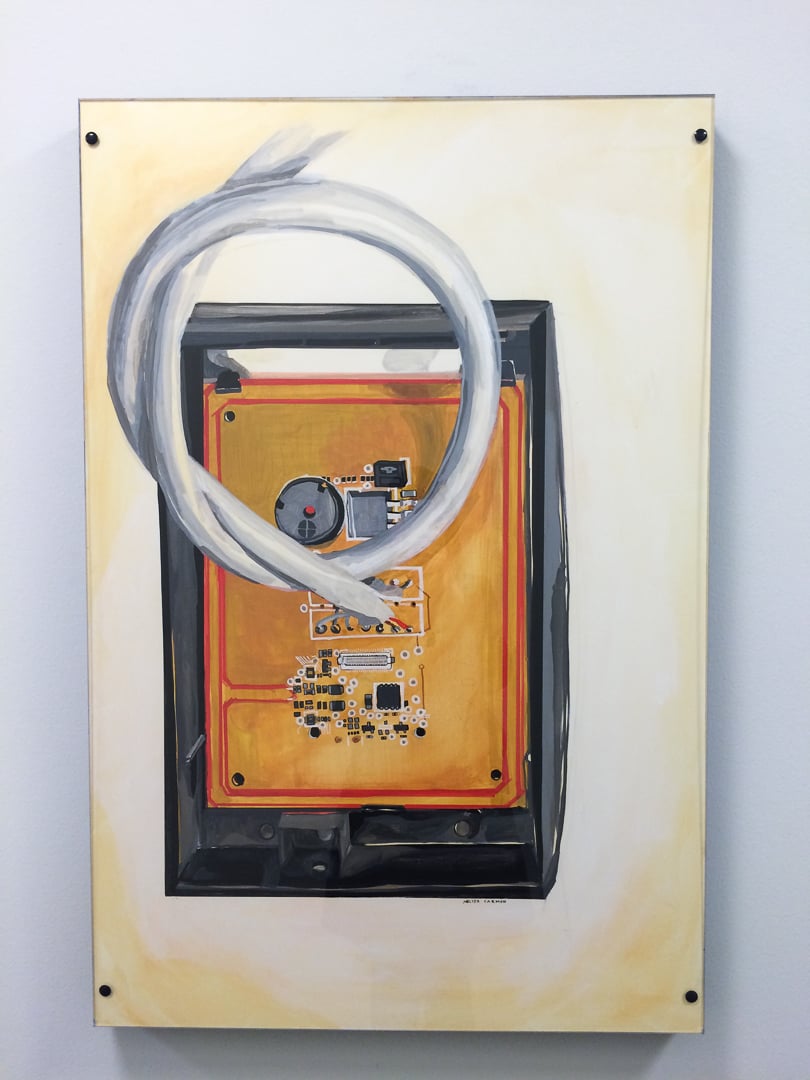
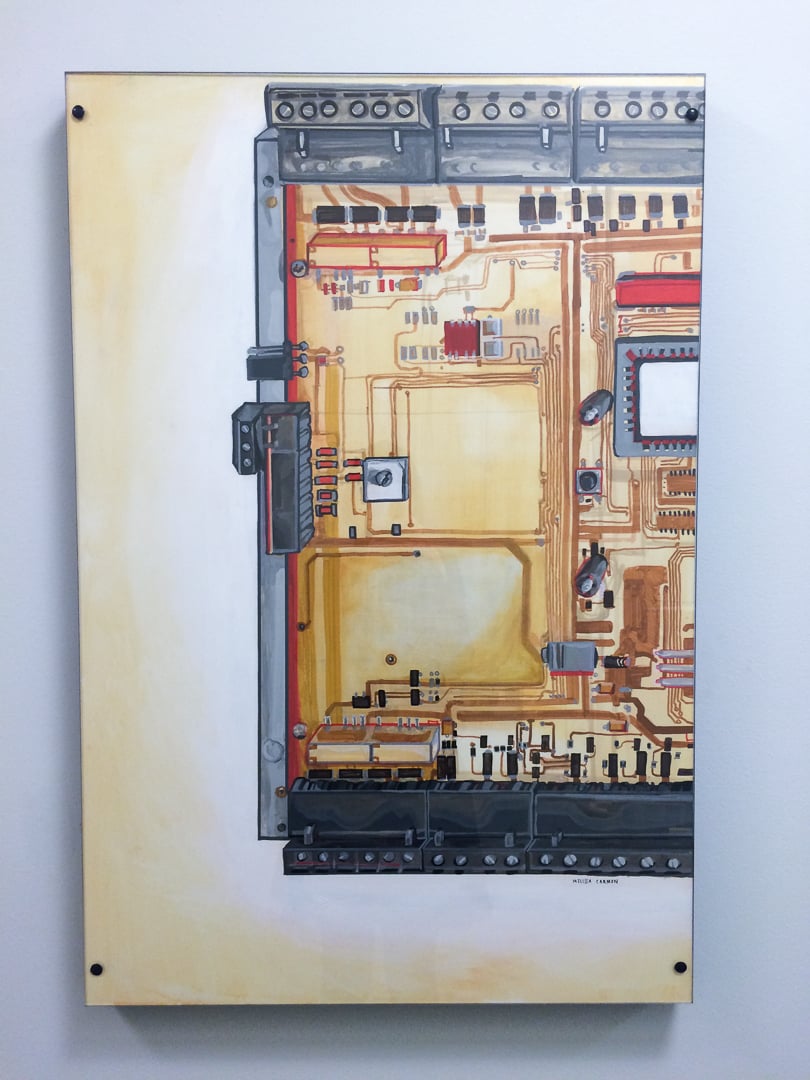
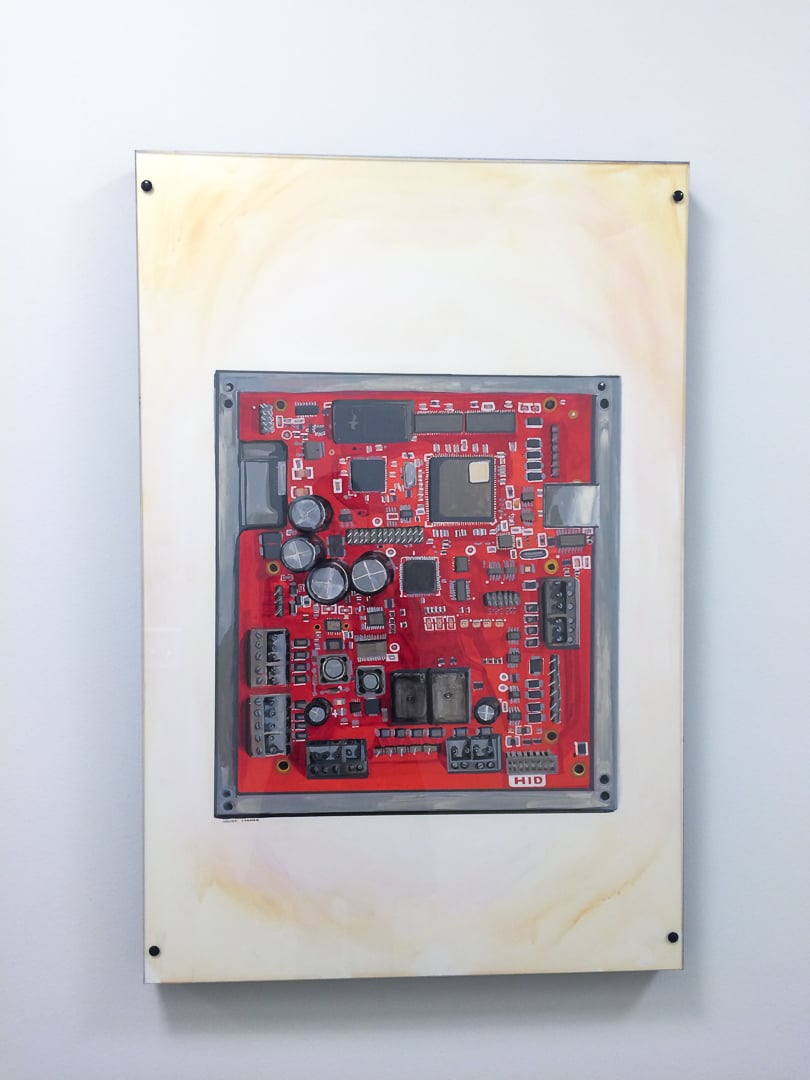
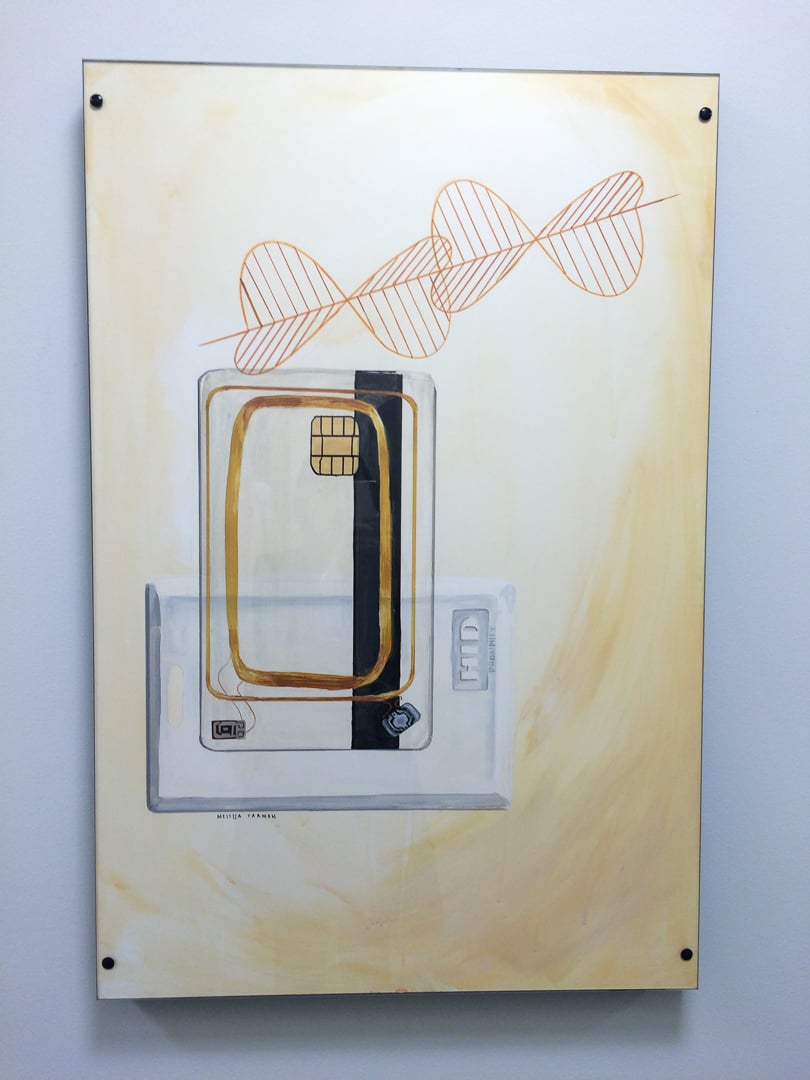
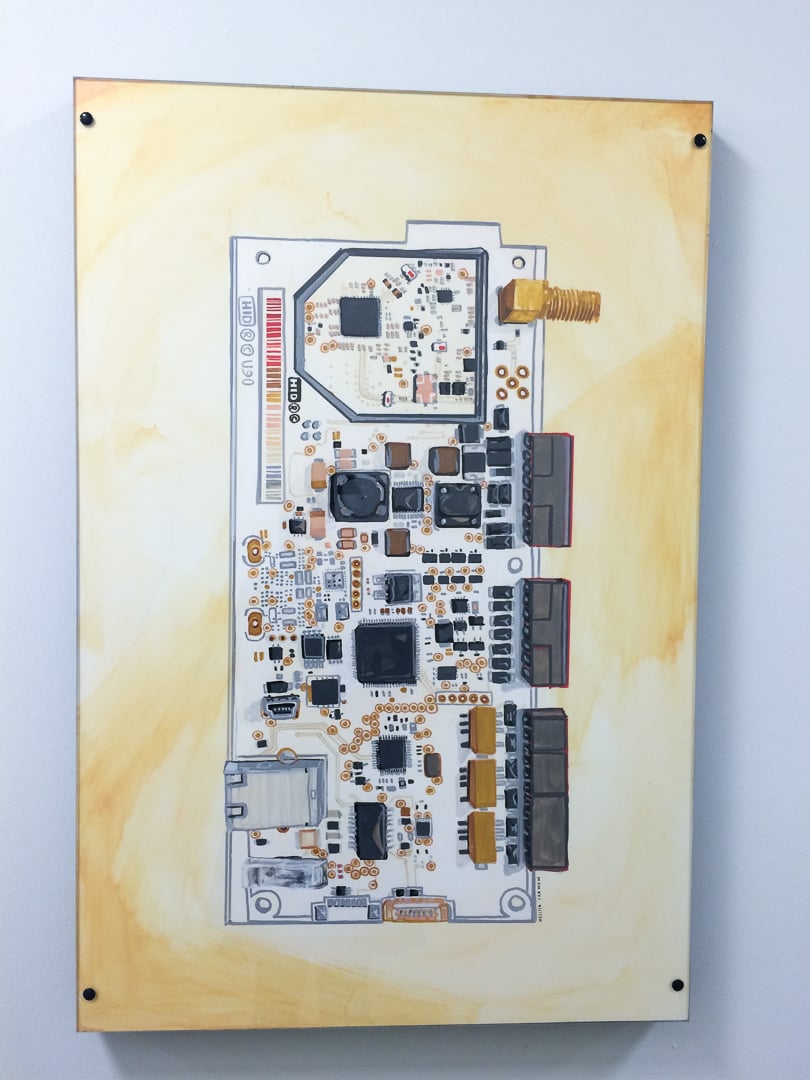
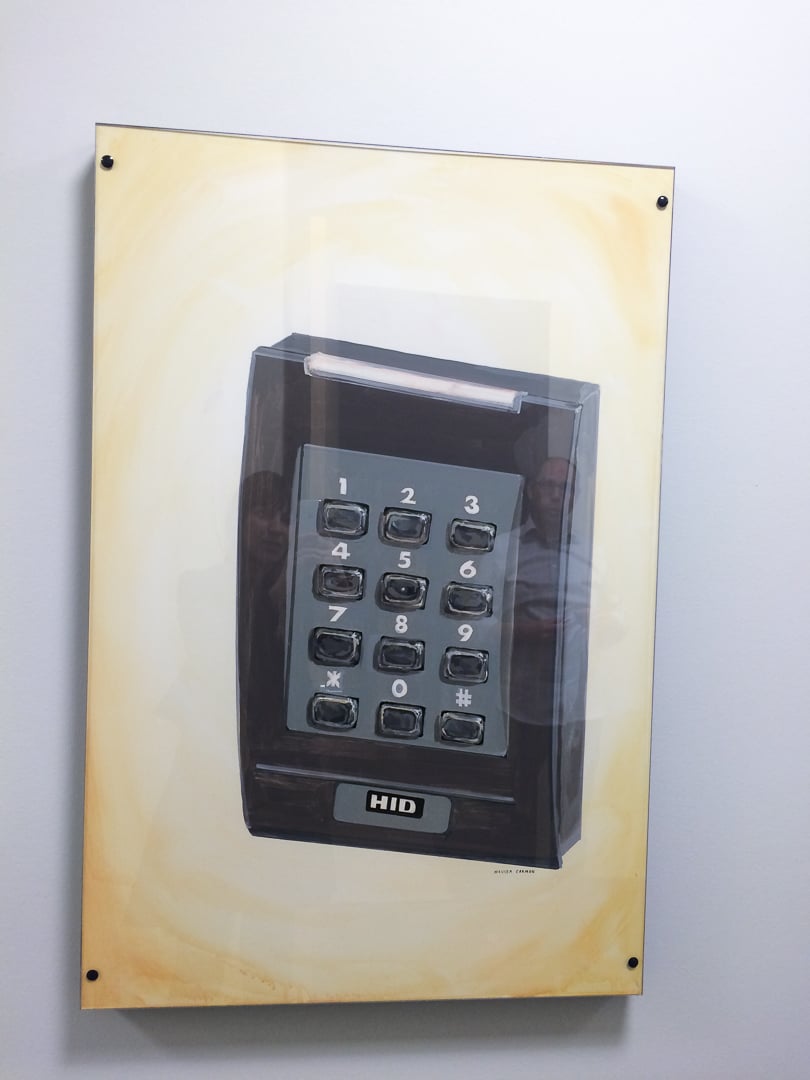
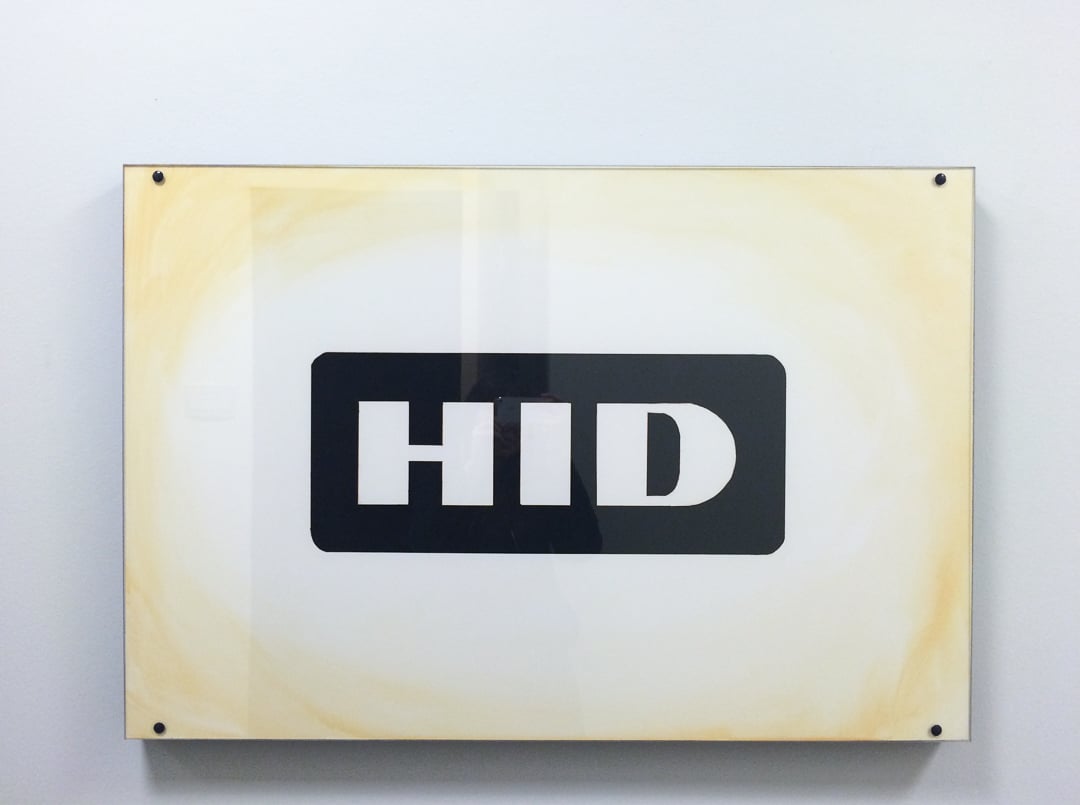
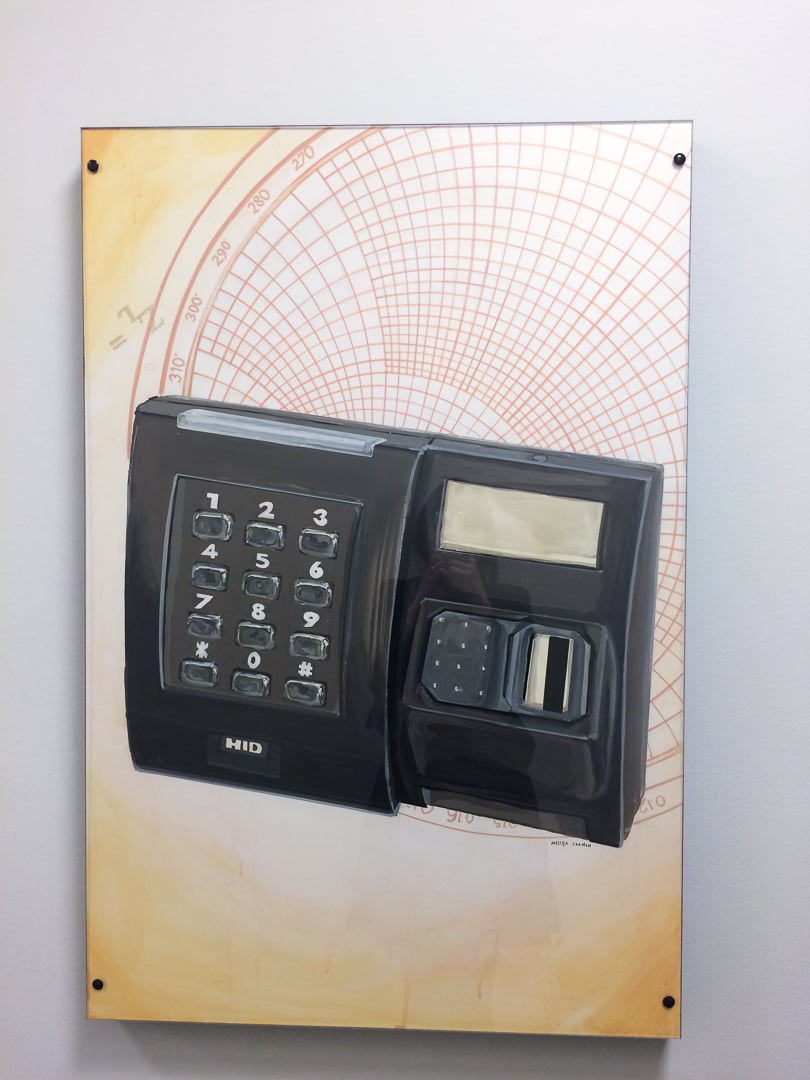
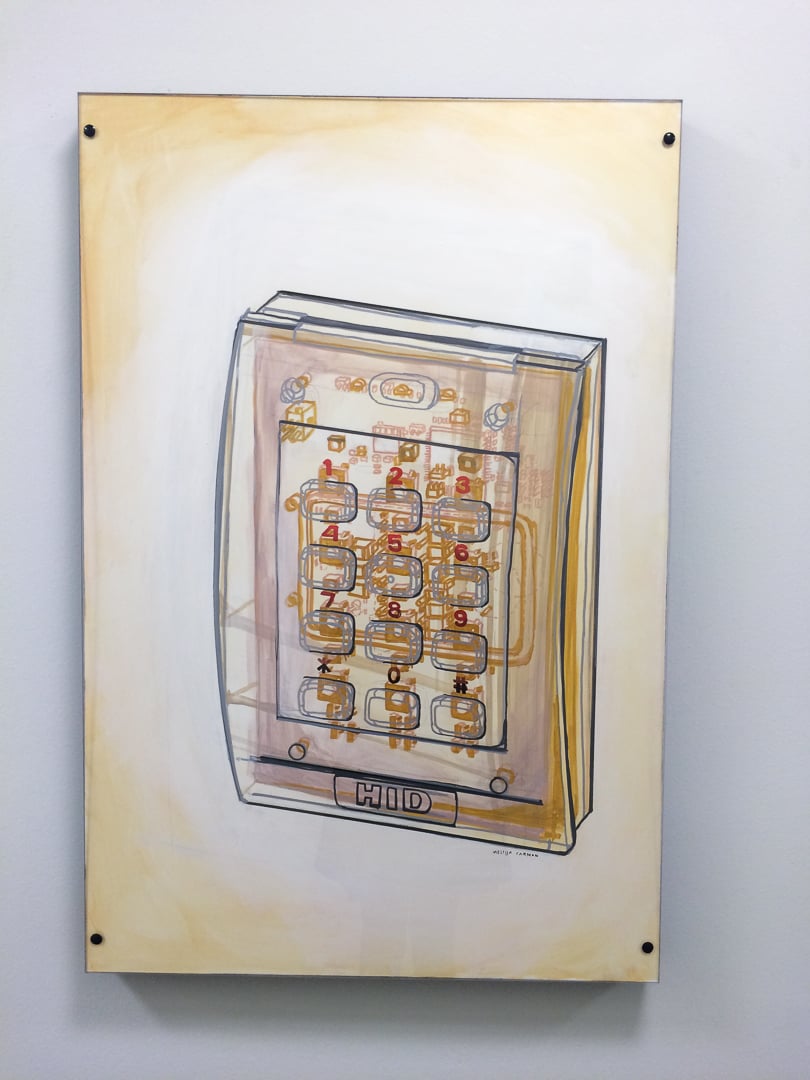
Closeups of the 9 paintings that I created for HID Global for installation at their R&D site in Westminster, CO. The paintings are now on display in their corporate headquarters in Austin, TX.
It was a joy to install the work, and meet more of the engineers who worked at the R&D site. My favorite interaction regarding the paintings was with a hardware engineer. When asked if the circuit board painting in question was visually accurate, he paused a moment and leaned closer to the artwork to scrutinize the painting. After a few beats, he said, "This piece needs a little more solder," and motioned to a dot. Then he added, "But that's true in real life," and shot me a smile.
One of the things I love most about projects like this, is working with the different personalities of the people I encountered along the way.
A big project entails big thanks: to Tom Stephens, project visionary and liaison, to the leadership at HID, to Jonathan Myers, who took many of these pictures and provided essential assistance in varying forms along the way, to Mike Carmon for his assistance in photographing circuitboards for reference, Brad Miller for helping me to install the protective coverings on each piece, the team at Fort Collins Plastics, and many others who helped make this project a reality!












